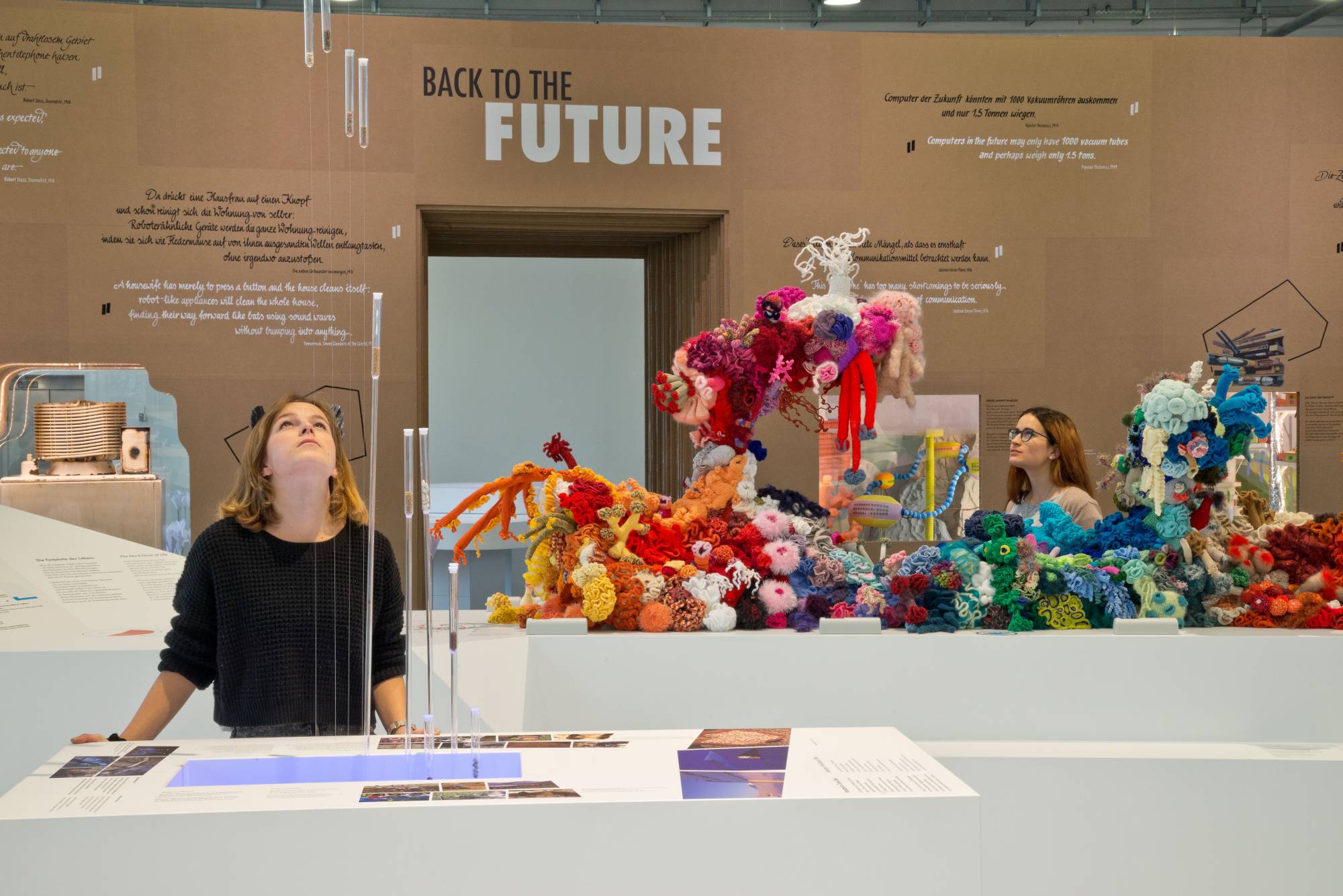From December 2014 through September 2016, the Deutsches Museum in Munich hosted the exhibit Welcome to the Anthropocene, hailed as “the first major exhibition in the world to look at an issue that will be decisive for the future.” Renowned for its enormous collection of industrial artifacts and machines, the Deutsches Museum is world’s largest science and technology museum. At the center of the Anthropocene show was a newly created outcropping of the Föhr Satellite Reef, specially constructed for this exhibition by the talented crochet reefers at the Museum Kunst der Westkuste. In a post-exhibition survey, the Deutsches Museum reported that the Crochet Reef was “the second-most liked object in the show,” and in a welcome break from tradition it drew a wide female audience into a venerable institution whose visitors are usually overwhelming male.
Welcome to the Anthropocene: Exhibition description from Deutsches Museum website
Welcome to the Age of Humans! Agriculture, trade, transportation, and industry: As long as humans have existed we have been utilising and altering our environment. Industrialisation, in particular, has contributed to the unmistakable and often irreversible fingerprint that we are making upon the Earth. Today, the human imprint is so deep and pervasive that scientists, policymakers, and society are considering whether human-caused changes are affecting the geological record over the long term – whether we are, in fact, living in a new geological era.
This exhibition, covering 1,400 square metres, is the first major exhibition in the world to look at an issue that will be decisive for the future: the Anthropocene. Through selected topics such as urbanisation, mobility, nature, evolution, food, and human-machine interaction, the exhibition explores the past, present, and future of humanity. Historical artefacts trace the technology that put us on the path to the Anthropocene, while current research presents the challenges we are facing today, as well as possible solutions. Artistic interpretations provide visions for the future and ask us to look at the world in new ways.
The exhibition catalogue is available in German and English.
The exhibition is a joint project of the Deutsches Museum and the Rachel Carson Center.
